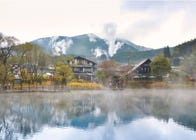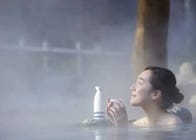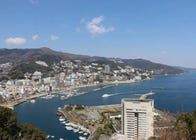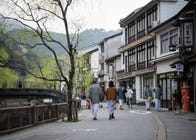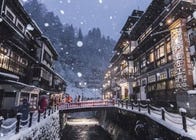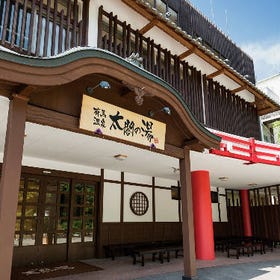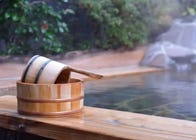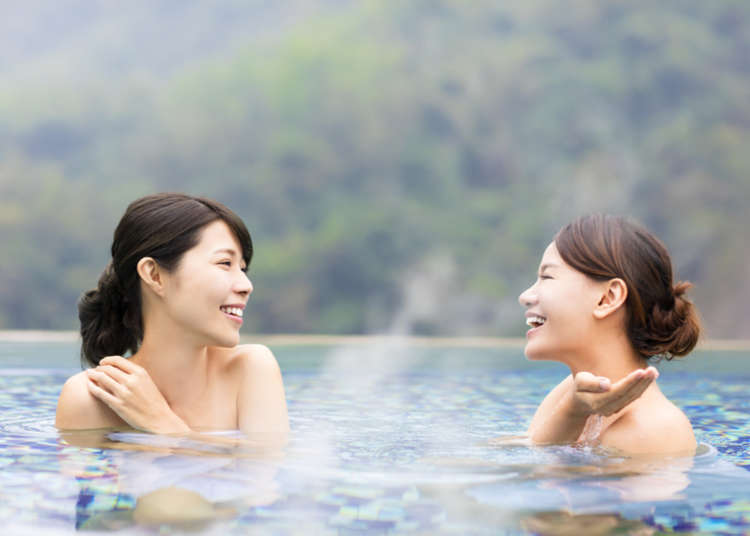
The Ultimate Guide to Onsen Hot Spring Etiquette and Where to Enjoy a Japanese Bath
- Written by: Lucio Maurizi
The serene beauty of Japan is a perfect setting for a rejuvenating hot spring experience. Onsen, as the hot springs are called, are an integral part of Japanese culture and have been enjoyed for centuries for their therapeutic and relaxing properties.
With over 2,900 onsen hot springs resorts scattered throughout the country according to the Nippon Onsen Research Institute, there's no shortage of places to unwind and soak in the soothing mineral-rich waters. But for first-time visitors, navigating the world of onsen can be a bit intimidating.
How do you bathe in an onsen? What are some of the most picturesque onsen in Japan? And what are the dos and don'ts of onsen etiquette? In this article, we'll explore everything you need to know about enjoying an unforgettable onsen experience in Japan.
- Table of Contents
What is an onsen? What is the difference between 'onsen' and 'sento'?
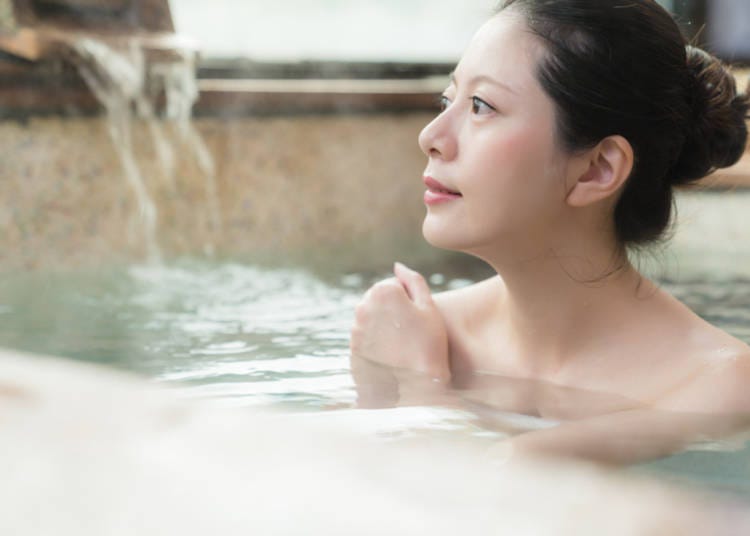
Onsen, a word that literally means "hot spring," are natural hot water baths rich in beneficial minerals. There are various types of onsen available, including popular ones like outdoor baths (roten-buro) and indoor baths (noten-buro).
A sento is a public hot bath that typically does not use naturally sourced hot water as with an onsen. In addition, there are "super sento" establishments that offer a more luxurious experience with a variety of saunas, baths, and additional services.
How to spot an onsen
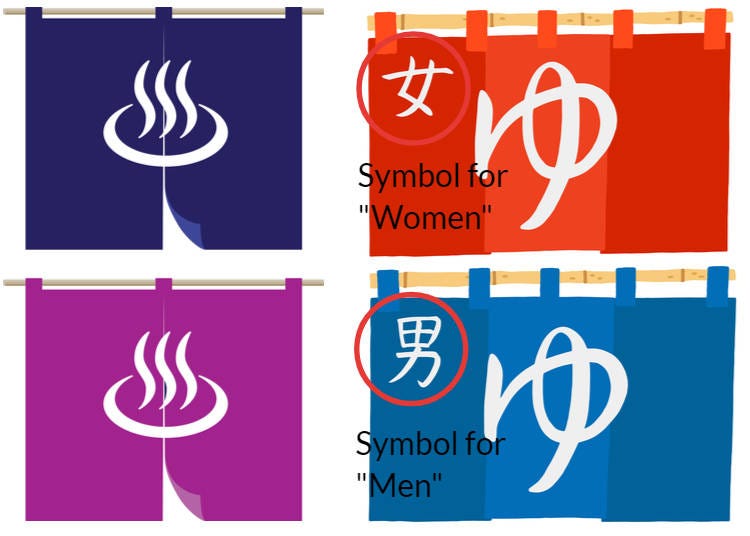
Onsen can be easily identified once you know what to look for. They typically have drapes (noren) at the entrance and are often marked with a symbol that resembles a steam rising from a hot spring (♨) or the character 湯/ゆ.
Sento, on the other hand, may appear similar to onsen at first glance, but they are usually found in urban areas rather than rural ones, since they are not sourced from natural hot springs.
While it is possible to find onsen in large cities, the "hot bath" symbol in an urban setting usually denotes a sento rather than an onsen.
How do you bathe in an onsen?
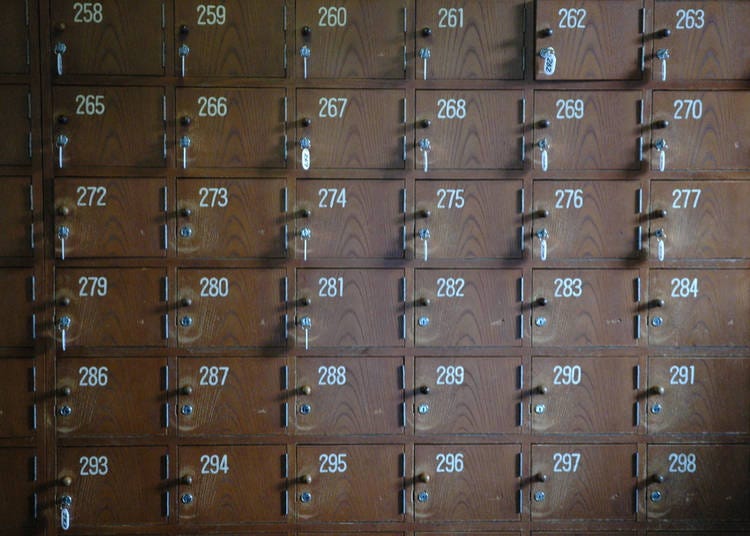
Before entering the facility
The term "onsen" can refer to both the hot spring itself and the accompanying facilities, which are often part of a hotel, resort, or traditional Japanese inn called a "ryokan."
If you plan to visit for a day and have not made a reservation, you can typically purchase a ticket from a vending machine or from a person stationed near the entrance.
It's worth noting that some facilities require visitors to remove their street shoes at the entrance, providing lockers or shelves for storage. In other cases, you may remove your shoes just before entering the bathing area. When in doubt, observe others and ask the staff for guidance.
If you are carrying luggage, you may want to ask the staff whether they offer temporary storage at the reception desk. However, it is generally advisable to avoid bringing large bags unless you plan to stay overnight.
Prepare for your onsen: The changing room
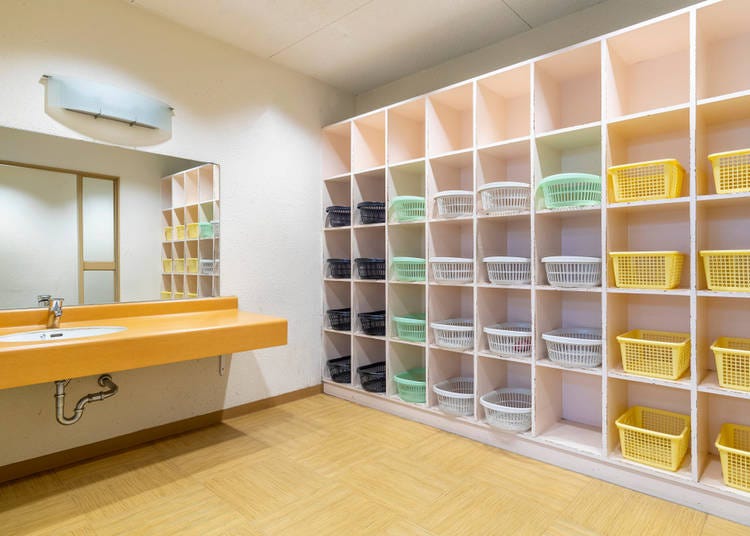
- Watch your feet - Upon entering most onsen, you’ll need to take off your shoes. Occasionally that is not the case, but you’ll always need to do so before entering the changing rooms.
- Don’t linger by the entrance – Especially if it’s the first time for you to see an onsen, the scene can be quite cool. Make sure, though, that you don’t linger by the entrance. Other people might be needing to get in or out. In Japan, physical contact is usually avoided among strangers, and when people stand by the entrance of the bath area, it feels almost like a violation of other patrons’ personal space (all of this while everybody is wearing only their “birth clothes”).
- Prepare to get naked – Clothes, swimming suits, or large towels of any kind are not allowed in the bath area. Don’t fret! No one will notice, and you’ll blend right in! You can leave all your belongings in the lockers in the changing room.
Make sure you bring a small towel with you but don’t worry if you can’t. Onsen usually allow you to use their clean towels - but it may be a paid service. Check at the entrance to the facility.
Finally, note that while you can take a small towel with you into the bath area, you can't enter the water with it.
Before entering the onsen bath itself
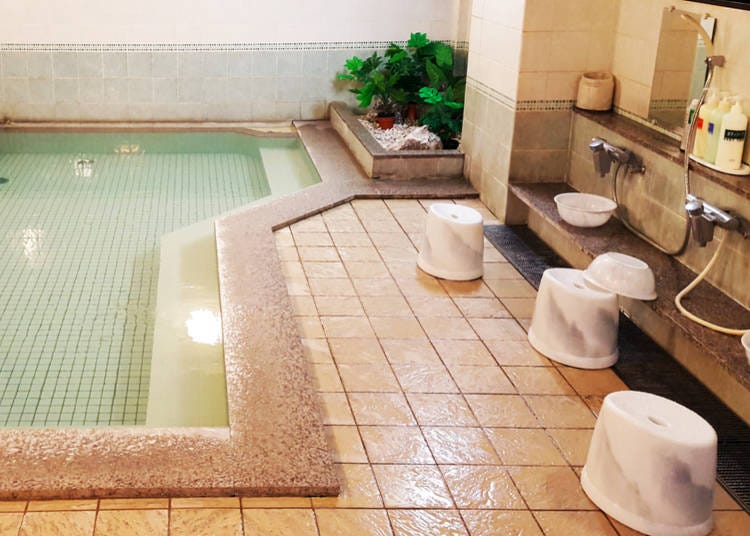
It's common practice (and courteous) to wash yourself off before entering the bath, even though you may observe some people just rinsing themselves off. If you brought your own soap, be sure to leave it neatly placed by the shower to avoid inconveniencing other visitors.
Onsen etiquette & tips: Before and after your Japanese-style bath
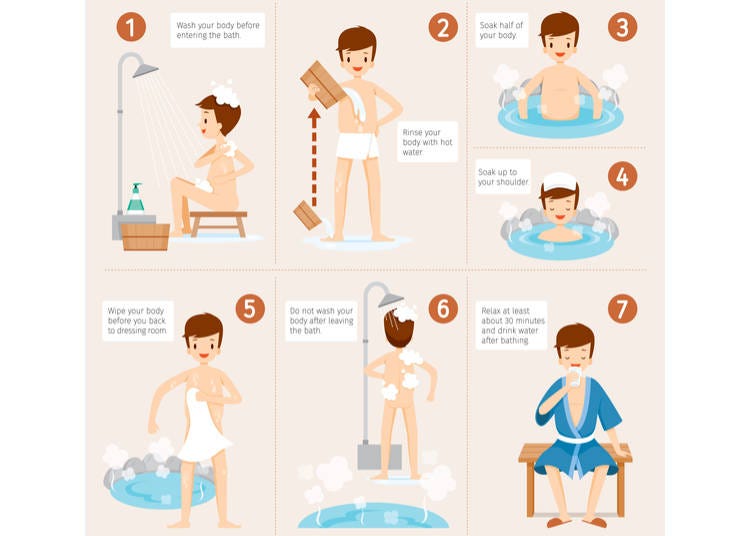
Along with all the above, some unwritten rules can often evade those who don’t go to an onsen (or sento) frequently.
- No splashing - Once you enter the bath, it's important not to jump, dive, or splash in the water. Simply relax and enjoy the experience, which is sure to be delightful.
- Keep your phone out of the changing room - It is common sense not to take pictures or videos, but using your phone in the changing room or the bath area is generally prohibited or, at best, not appreciated. If you must use your mobile device, extend your arms fully within your locker and use it in that position.
- Tie your hair neatly - If you have long hair, make sure to tie it up securely after you shower.
- Be mindful of your surroundings - Showers in onsen are typically situated close to one another. As a result, it's important to be mindful of not splashing other individuals with water or soap. You'll be grateful when others adhere to the same rule.
- More rinsing – Some onsen have a large tub of hot water near the entrance that you can use to rinse yourself before or after entering a bath (and acclimate your skin to the temperature), or anytime you wish. To do so, simply scoop up water with a bucket.
- Keep that water flowing – Whenever you move from one bath to another in the onsen, make sure to rinse yourself. Some places also have saunas, and if you use the sauna, be sure to rinse yourself before entering a bath.
- Avoid grooming – Although some locals may trim their beards in the bath area while showering, it is generally considered impolite to engage in any grooming activities while in the onsen.
- Hey, I’m up here – In order to maintain an atmosphere that is comfortable and enjoyable for everyone, patrons tend to avoid looking (however briefly) at other patrons. It’s hard sometimes to maintain a mile-long stare in front of you when you are in a particularly beautiful place, but make sure you avoid looking (or worse yet staring) at anyone.
- Keep the chatting low – Onsen are social environments, but they are also places of relaxation and tranquility. While it's acceptable to chat with friends and family while in the bath, make sure to do so quietly.
Onsen how to and etiquette – after the bath
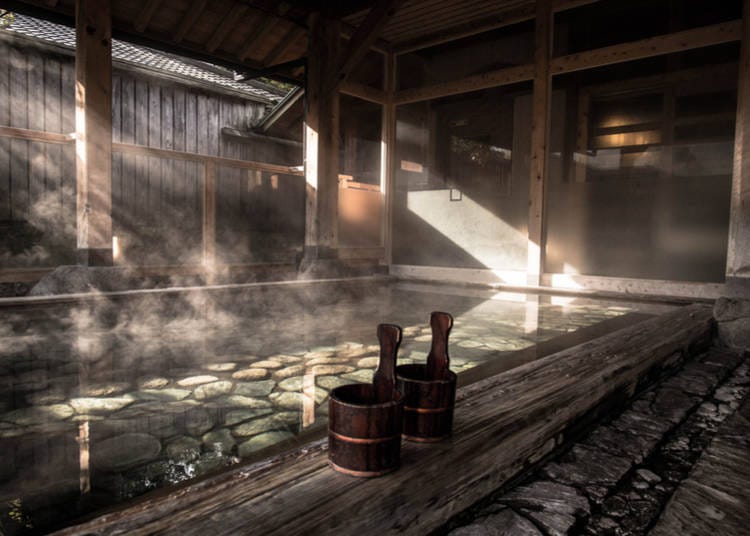
- Dry yourself - When you’re done with the bath area, you should not enter the changing room dripping wet. It can sound tricky (and it is), since the only towel you’re allowed in the bath is a very small one, but try to dry yourself best you can with it.
- Clean up – If you used buckets to wash yourself, and stools to sit on, make sure you also rinse those before leaving.
- Can I sit here? – If there are chairs or benches in the changing area, you can use them only after you’ve put some clothes on.
Onsen Etiquette – FAQ
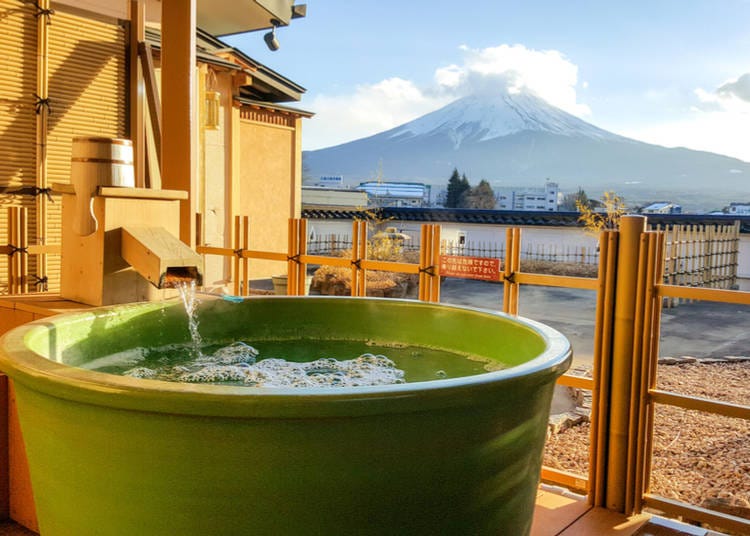
- Can I drink alcohol in the bath area? - Drinking alcohol in the bath area is not allowed due to several reasons, including health risks. However, you can drink in the lobby. After you're done, make sure to hydrate with some of the traditional Japanese beverages like coffee and milk or fruits au lait.
- What if I have tattoos? - Tattoos are often prohibited in onsen and other public places such as gyms, swimming pools, and saunas. However, if you inform the staff beforehand, they may allow you to use the facilities. They may also request you to cover them with a removable sticker. Although attitudes in Japan are changing, some onsen are already accepting tattooed patrons.
- Can you use onsen when on period? - If you happen to be on your period, women are advised not to go into an onsen bathing area.
- Are there different kinds of onsen? - Yes! Different onsen have different water sources, with different minerals and properties, each with different beneficial effects. Some have very hot water, which most people prefer, but only for a very short time. On average, onsen water is between 38 and 43 degrees Celsius, but some onsen have baths with temperatures well over 48-50 degrees Celsius.
- What kinds of areas can be found at an onsen? - An onsen typically has an indoor bath tub, a big open-air bath tub (known as a "rotenburo"), and a place for washing, with complimentary soap and shampoo products for guests to use. Some onsen may also have additional facilities like a cool-water bath or a sauna.
What areas of Japan are most famous for onsen?
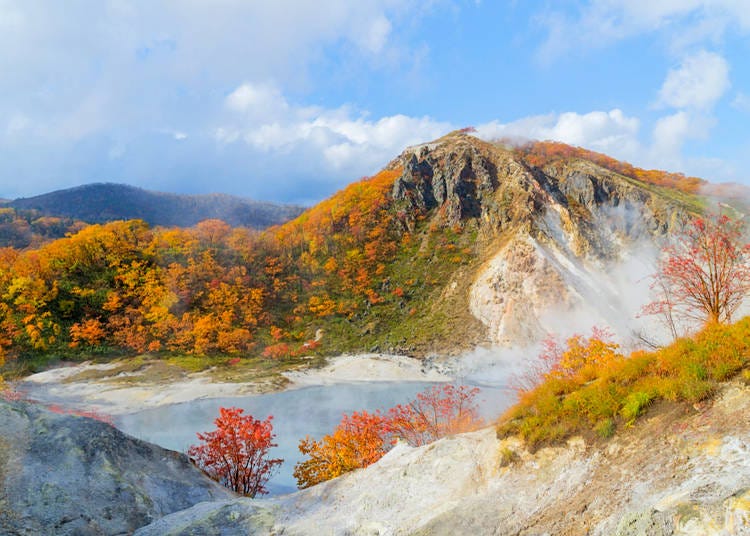
Kusatsu (Gunma Prefecture): This is arguably one of the most famous “onsen towns” in Japan. Not too far from Tokyo, this area is an onsen resort with tens of baths, some of which are even free (and managed by the city or the community).
Hakone (Kanagawa Prefecture): Hakone is the most famous onsen resort among those around Tokyo. You will be able to enjoy soothing baths and the boiling sulphur springs of Owakudani Valley. And don’t miss the beautiful Fuji-Hakone-Izu National Park, and one of the most iconic views of Mount Fuji as well as many shrines and a boat tour on Lake Ashi.
Kurokawa (Oita Prefecture): Kurokawa is a beautiful small town to journey on foot. With nature all around, and with beautiful wooden buildings, it transpires culture and history. Many of its baths are open-air, making it a very sought-after location for onsen. Some of its smaller ones are also the most historically important, located by the Kumamoto Castle, and dating back to the feudal era when many lords used to enjoy them.
Noboribetsu (Hokkaido Prefecture): Noboribetsu is known for its “Hell Valley” (Jigokudani), a characteristic volcano crater that gives onsen waters unique characteristics. Sitting in a setting straight from a fantasy book, demon statues decorate the city center, and rural paths take you through the Noboribetsu Primeval Forest and to amazing views of Lake Kuttara.
Recommended onsen tours
Experience the ultimate relaxation and rejuvenation at the best onsen resorts in Japan. Discover the unique properties of different mineral-rich waters and unwind in a variety of indoor and outdoor baths on an onsen tour!
Visitors to Japan should not miss the opportunity to visit an onsen and experience the unique and therapeutic properties of its waters. With a variety of onsen destinations throughout the country, there's something for everyone, from bustling onsen towns to tranquil, secluded locations surrounded by natural beauty.
Be sure to check out the following articles for more information on onsen in Japan!
Lucio Maurizi is an automotive expert specializing in Japan's car scene and auto-tourism. With an MA in East Asian History from La Sapienza Università di Roma, he's a multi-talented contributor to travel platforms like LIVE JAPAN, Japan Travel, and GPlus Media. His Instagram account (50k+ followers) offers insider views on Japan's automotive culture. Lucio also actively collaborates with professional drivers and influencers and organizes can't-miss car events in Tokyo.
*Prices and options mentioned are subject to change.
*Unless stated otherwise, all prices include tax.
Popular Tours & Activitiess
Recommended places for you
-

Jukuseiniku-to Namamottsuarera Nikubaru Italian Nikutaria Sannomiya
Izakaya
Kobe, Sannomiya, Kitano
-
Goods

Yoshida Gennojo-Roho Kyoto Buddhist Altars
Gift Shops
Nijo Castle, Kyoto Imperial Palace
-

ISHIDAYA Hanare
Yakiniku
Kobe, Sannomiya, Kitano
-
Events

KYOTO TAKENOSATO ONSEN MANYO NO YU
Hot Springs (Onsen) & Bath Houses (Sento)
Kyoto Station, To-ji Temple
-
Appealing

Rukku and Uohei
Izakaya
Sapporo / Chitose
-

Kambei Sannomiyahonten
Yakiniku
Kobe, Sannomiya, Kitano
-
Ad

(Opening in Jan 2026) 'THE SUMO LIVE RESTAURANT HIRAKUZA GINZA TOKYO!' 5 Exciting Ways to Experience the World of Sumo!
-

This Winter, Godzilla Takes Over Haneda Airport
by: Guest Contributor
-

Jujutsu Kaisen Takes Over JR East With a Wrapped Shinkansen This Winter
by: Guest Contributor
-
Ad

Complete Guide to Ueno's National Museum of Nature and Science, the Perfect Place to Visit on Rainy Days or With Children
-
Ad

Discover the "Miraculous Forest" in the Heart of Tokyo: The Institute for Nature Study (9 Minutes from JR Meguro Station)
-

How to Get Don Quijote's Exclusive 2025-2026 Winter Gift (+Tax-Free Savings)
-

Osaka Spa World: Inside The Insane Onsen Complex!
-

Togatta Onsen Guide: Best 6 Places to Indulge Yourself in Miyagi Prefecture's Magical Hot Springs Resort Village
-

Iizaka Onsen Guide: Japan's Gorgeous Hidden Hot Springs Town! (Access, Things to Do, Ryokan)
-

Japan's Bath Culture: Tips You Should Know!
-

Simple Onsen Beauty Tricks Anyone Can Try at the Hot Spring - Recommended by a Japanese Beauty Researcher!
-

JR Edition: Visit all of Tokyo in one Day with the Tokyo Metropolitan District Pass!
- #best sushi japan
- #what to do in odaiba
- #what to bring to japan
- #new years in tokyo
- #best ramen japan
- #what to buy in ameyoko
- #japanese nail trends
- #things to do japan
- #onsen tattoo friendly tokyo
- #daiso
- #best coffee japan
- #best japanese soft drinks
- #best yakiniku japan
- #japanese fashion culture
- #japanese convenience store snacks















